
Boxwood Hedges Frame This Washington, D.C. Home Boxwood hedges frame the stairs leading to the front entry of the Washington, D.C. home.
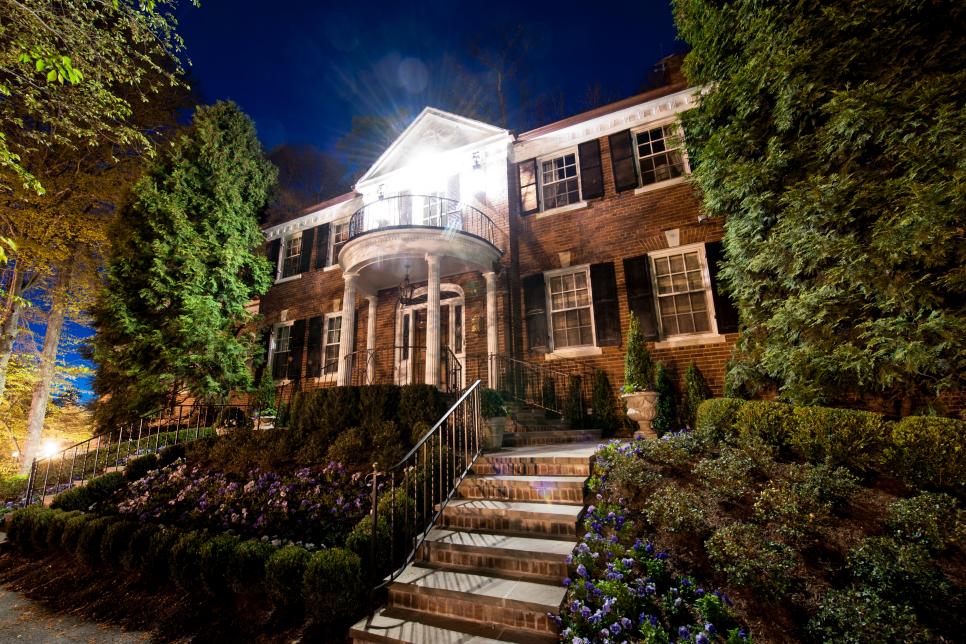
Azaleas and Peonies for Landscaping Landscape artists Blake Dunlevy and Gina Benincasa of Dunlevy Landscapers at Barnesville, Maryland used azaleas and peonies for colour in the front lawn of the estate in Washington D.C.

Eastern Hornbeam (Ostrya virginiana) Also called ironwood, eastern hornbeam is a beautiful tree that offers multi-season interest in Northeastern gardens. Man blossoms, or catkins, linger on trees well into winter. Female flowers resemble jumps. A woody fruiting capsule comprises tiny nutlets preferred by birds like grouse, pheasant and songbirds. The timber of hornbeam was prized by colonists because of its strength and graced many instrument handles and sleigh runners. This shrub is hardy in Zones 4 to 8.
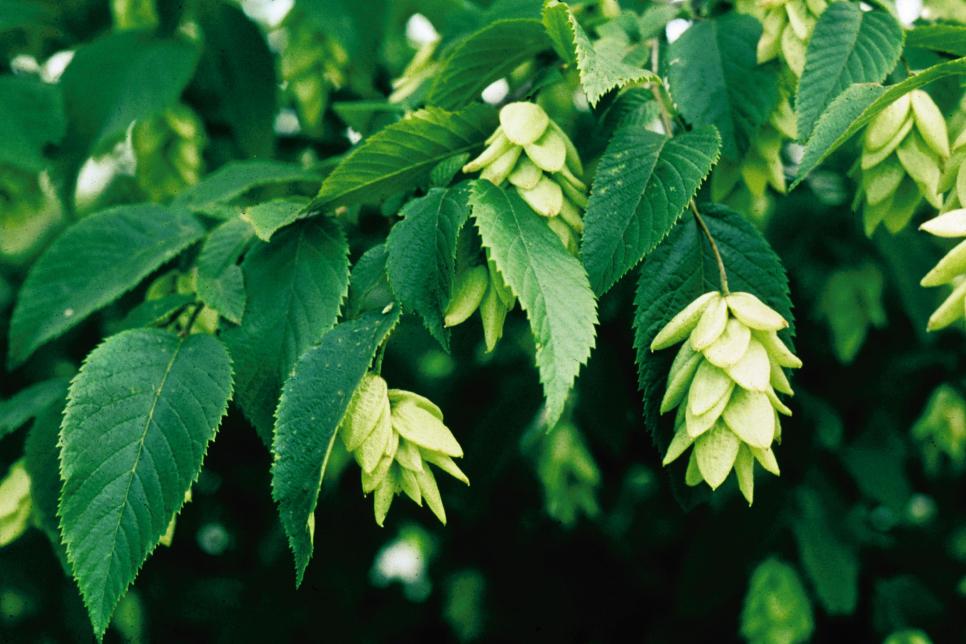
Swamp Milkweed (Asclepias incarnata) A must in butterfly gardens, swamp milkweed is a host plant for monarch butterfly caterpillars and works well in Northeastern gardens. Butterfly adults visit blooms, together with a number of different pollinators. Flowers are typically pink, but you could spot some white blossoms on plants. Despite the title, swamp milkweed tolerates average to moist soils. This tap-rooted perennial prefers full sun and can be best left undisturbed once planted in the garden. Swamp milkweed is hardy in Zones 3 to 6.
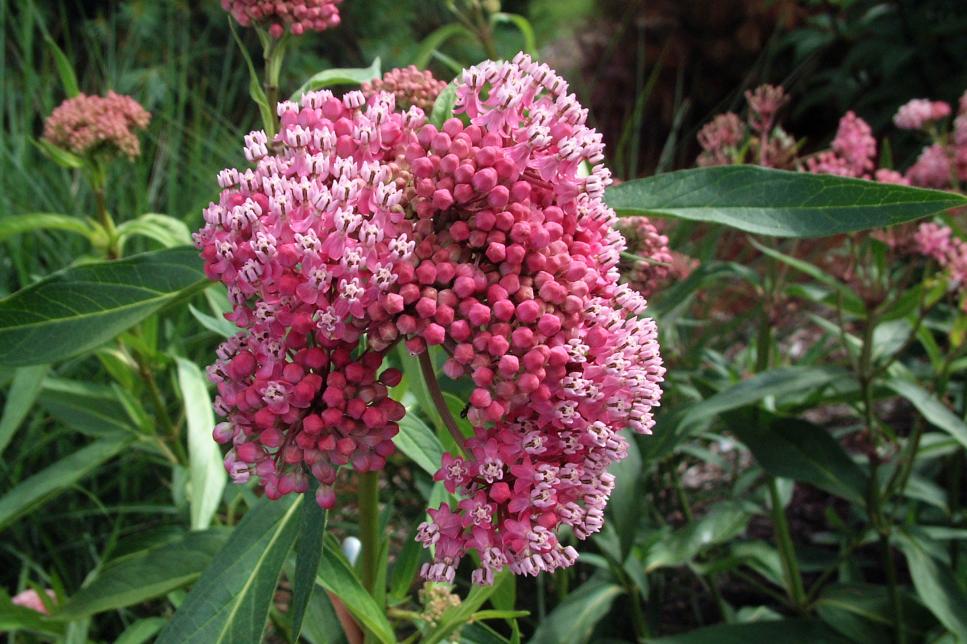
American Witch Hazel (Hamamelis virginiana) Yellow blossoms with ribbon-like petals look on plants in late fall about the period that renders drop, providing a significant late-season pollen source for insects. Plant form is a shrub to small tree. In its native setting, witch hazel favors woodland settings with well-drained, acidic soil, but tolerates heavy clay soil. Plants form suckers and will spread to form a shrubby colony. Remove suckers to keep plant spread in check. Witch hazel is hardy in Zones 3 to 8. Works nicely in the Northeast.
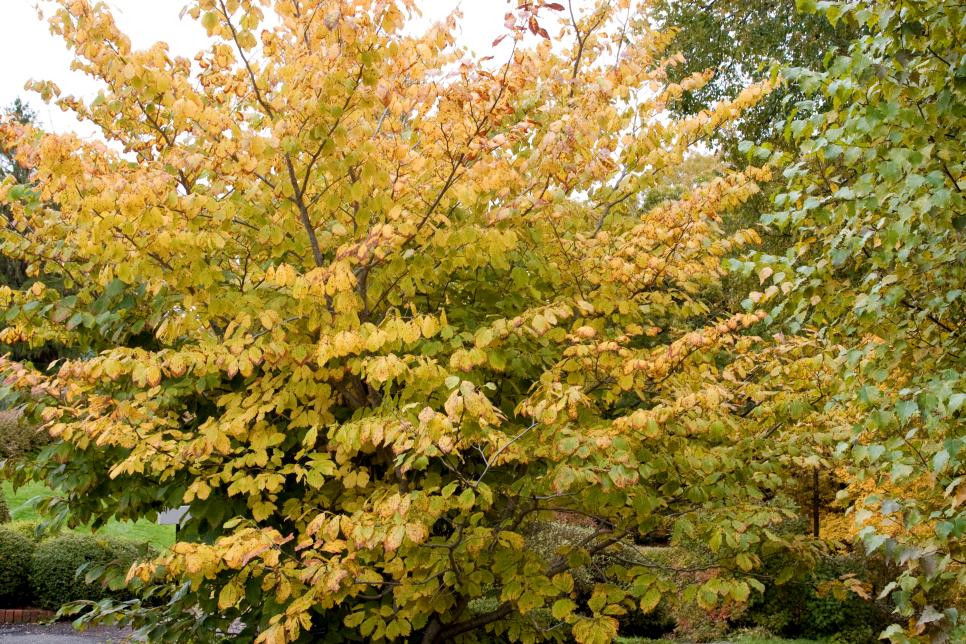
Landscaping to get a Michigan Ranch This Michigan ranch home had a few basic footprints round the front of the home, and looked rather plain. Landscape Design and Associates utilized Malus 'Tina' crabapple within an accent. Adding a very different walk layout and flagstone bench gave the house a clean, contemporary appearance.

Ornamental Grasses and Flowers Brighten This Entry Just outside this Michigan ranch house door Landscape and Design Associates balanced the entry by installing ornamental grasses, iris and daylilies for textural interest.

Prairie Dropseed (Sporobolus heterolepis) This fine-textured grass creates beautiful clumps that are perfect for edging planting beds in Midwestern gardens. Contain drought-tolerant prairie dropseed in wildlife landscapes. It provides cover for foraging birds, nesting material and abundant seed. Plants are perennial in Zones 3 to 7.

Purple Coneflower (Echinacea purpurea) Purple coneflower boasts striking blossoms with reflexed purple petals that surround a spiky orange-gold cone. This drought-tolerant perennial is hardy in Zone 4 to 8 and indigenous to the Central Midwest. Blossoms beckon butterflies and bees.
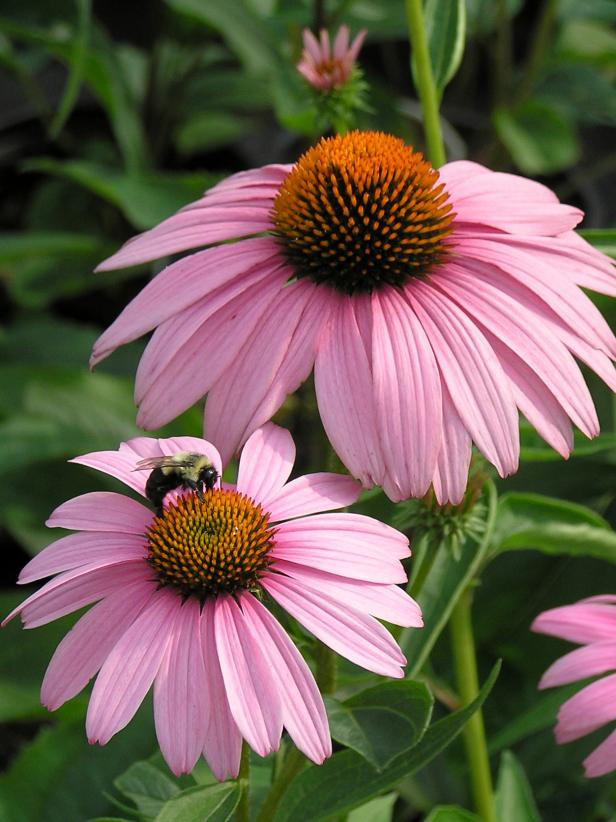
Cardinal Flower (Lobelia cardinalis) Cardinal blossom is a hummingbird favorite and perfect for moist areas that receive sun to part shade. Although plants are hardy in Zones 4 to 8, they are not true perennials because plants die as soon as they set seed. Look for counter tops or young plants in the stage where reduced leaves join the stem. These offsets quickly create roots and set themselves nicely in Midwest gardens.

Landscaping to Treatment an Overgrown Front Yard This house was very overgrown and they were not sure what should stay and what should go. Some footprints were moved to a better location, many overgrown and dying plants were removed. This had to be opened up to be more welcoming.
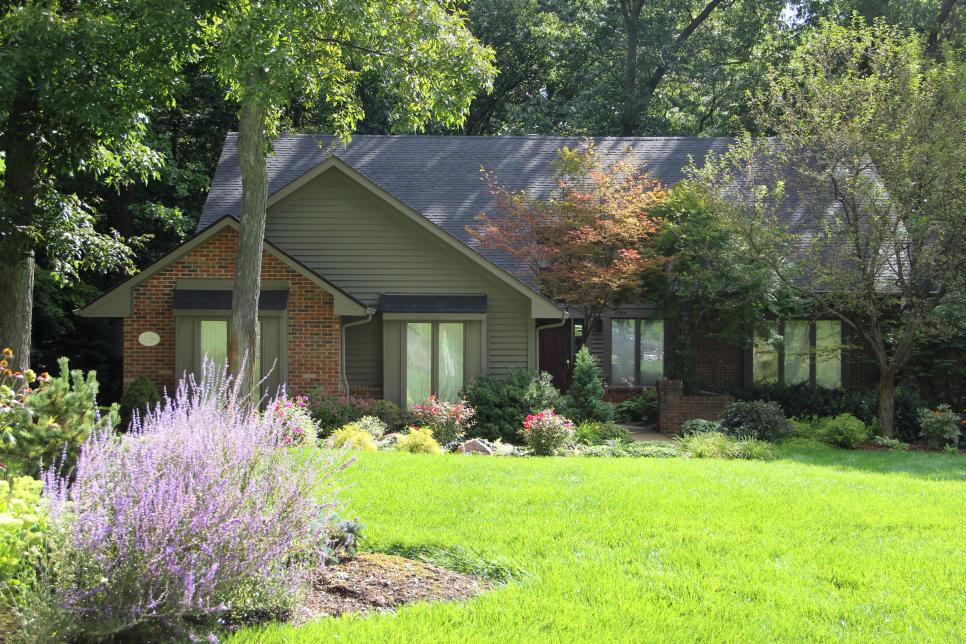
Little Bluestem (Schizachyrium scoparium 'The Blues') 'The Blues' cultivar of little bluestem grass brings color to the garden with blue-green stems which turn fiery red-orange in fall. Plants are deer resistant, drought tolerant once established and hardy in Zones 3 to 9. Include little bluestem to bring skipper butterflies to the garden and provide forage for birds.

Appealing Front Yard Landscaping Many native and sustainable plants were utilized in this south eastern Michigan front yard.

Plant Variety Is Essential in Front Yard Program A variety of plants with different bloom times with foliage color envelope the mailbox. Sumac 'Tiger Eyes' provides milder yellow foliage contrasts with Eupatorium 'Chocolate'. There's also a crying beech and Fagus sylvatica 'Pendula Purpurea'.

Plant With the Seasons in Mind Ornamental grasses and scrubs offer greenery during Michigan's harsh winters.

An English Cottage Garden The cabin sets the English cottage garden theme for this Maryland estate. Perennial clusters include Asian deserts, 'September Charm' anemone and 'Blue Fortune' hyssop.

Curb Appeal Enormous ferns flank the front porch of the 1923 brick bungalow in Atlanta. Evergreens, a rosemary bush and manicured hedges ensure a portion of the garden remains green year-round.

Lady Fern (Athyrium filix-forma 'Lady in Red') Dark red stems stand out from chartreuse green fronds with this cultivated form of a woodland native fern. Choose lady fern for a lush groundcover in a shady garden. Plants tolerate full sun if soil stays moist. This fern thrives in well-drained soil with average moisture from the South, but plants can withstand drier soil. Lady fern provides wonderful habitat for insects and ground-feeding birds. This fern is hardy in Zones 4 to 8.
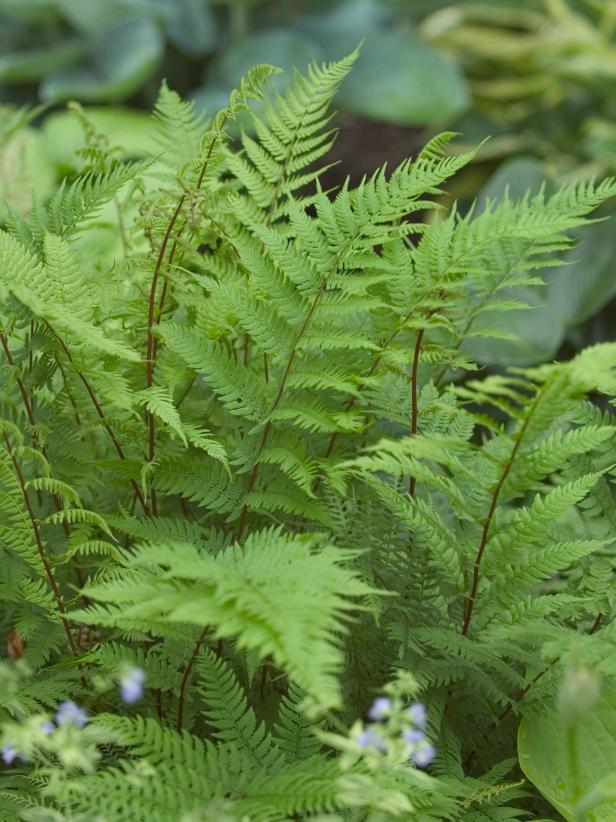
Awesome Azalea Azaleas are a commonplace feature in Southern gardens and do well in partially shaded sites. This 'Higasa' azalea boasts a delicate pink colour.

Black tupelo (Nyssa sylvatica) Also called black chewing gum, this Southern favorite fills autumn forests with fiery colour. Black tupelo soars to 30 to 50 feet, with a pleasing, broadly pyramidal form. It creates a superb street tree and withstands dirt conditions from dry to water. Female trees bear fruit that's a favorite among birds. These trees do not transplant well, so website them where you want them. Black tupelo is hardy in Zones 3 to 9.

Spicebush (Lindera benzoin) Spicebush brings multi-season interest to a Southern garden. Scented blooms appear in late winter to early spring, before leaves unfurl on branches. Fall shade features yellow colors, and if leaves drop, female plants show red berries which beckon birds. Be sure to plant both create and female plants to get berries. Spicebush hosts spicebush swallowtail butterfly larvae. Plants are hardy in Zones 4 to 9.
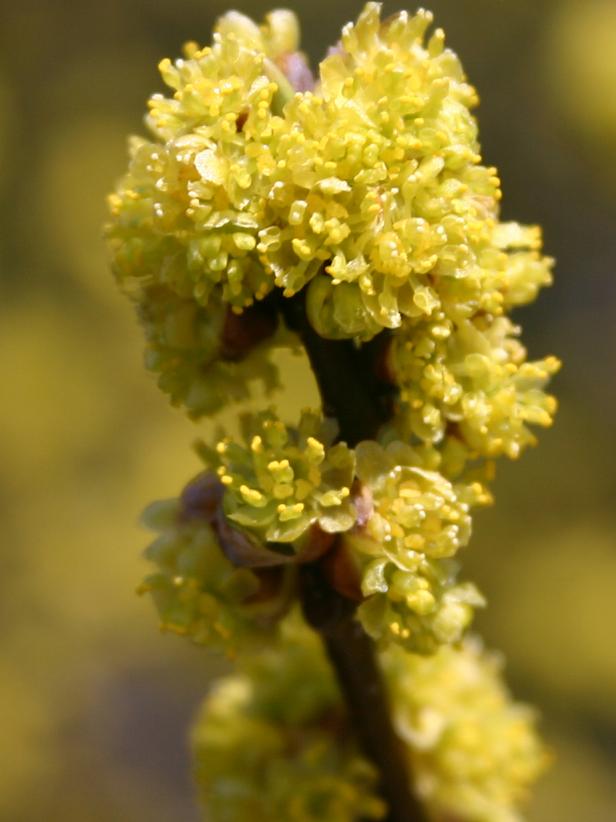
Moonglow Sweetbay Magnolia (Magnolia virginiana 'Jim Wilson') An ideal choice for smaller yards, Moonglow magnolia opens lemon-scented blossoms from mid-spring to early summer. Unlike other magnolias, Moonglow tolerates wet as well as boggy sites. Plants are normally deciduous except at warmest regions, although foliage can be semi-evergreen even in colder zones. Growth tends to be more shrub-like in coldest areas; a traditional tree-like form happens in more Southern zones. Moonglow is hardy in Zones 5 to 9.

Munchkin Oakleaf Hydrangea (Hydrangea quercifolia 'Munchkin') This cultivated variety of the native oakleaf hydrangea boasts a tight, compact form that's excellent for modern yards and Southern gardens. Plants reach a mature size of 3 feet tall by 4.5 feet wide and are suitable for use as a specimen tree or hedge. Flowers open white and fade to pink as they age. Leaves turn into an eye mahogany red in fall. Harvest faded blossoms to dry for indoor structures. 'Munchkin' is hardy in Zones 5 to 8.

A Southern Estate A boxwood knot garden defines the front entrance for this 1927 Atlanta house designed by famous Southern architect Philip Trammell Schutze.
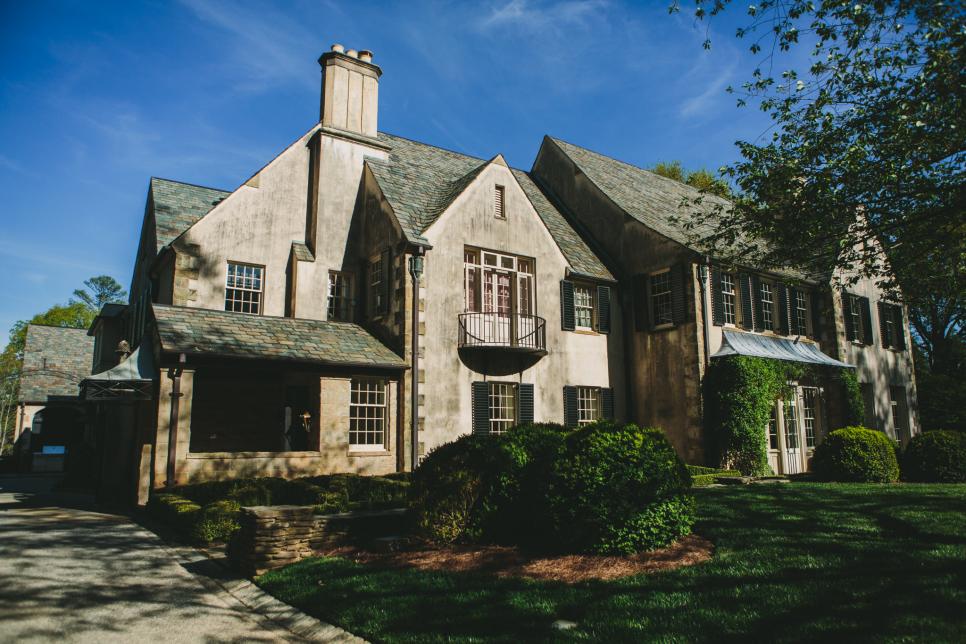
Knot Garden Formally designed knot gardens similar to this one from the Buckhead area of Atlanta could be traced back into Elizabethan England where they have been frequently used to comprise culinary herbs. Knot gardens are usually composed of boxwood, as in this Japanese boxwood-defined Southern garden.

No comments:
Post a Comment